
How to Use HX711 - Bridge Sensor Interface: Examples, Pinouts, and Specs
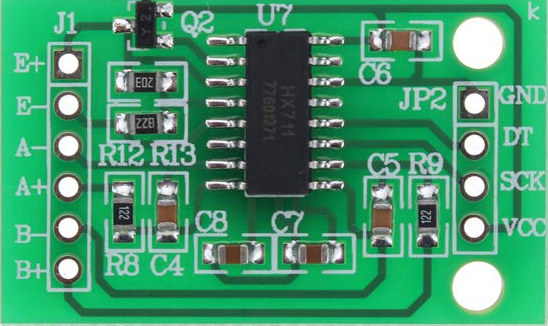
 Design with HX711 - Bridge Sensor Interface in Cirkit Designer
Design with HX711 - Bridge Sensor Interface in Cirkit DesignerIntroduction
The HX711 module, manufactured by YOUMILE with the part ID HCMODU0073, is a precision 24-bit analog-to-digital converter (ADC) designed for weigh scales and industrial control applications. It is specifically tailored for interfacing with a bridge sensor, such as a load cell, which is commonly used in electronic weighing systems. The HX711 provides a simple and effective solution for obtaining high-resolution measurements of pressure, force, and weight.
Explore Projects Built with HX711 - Bridge Sensor Interface
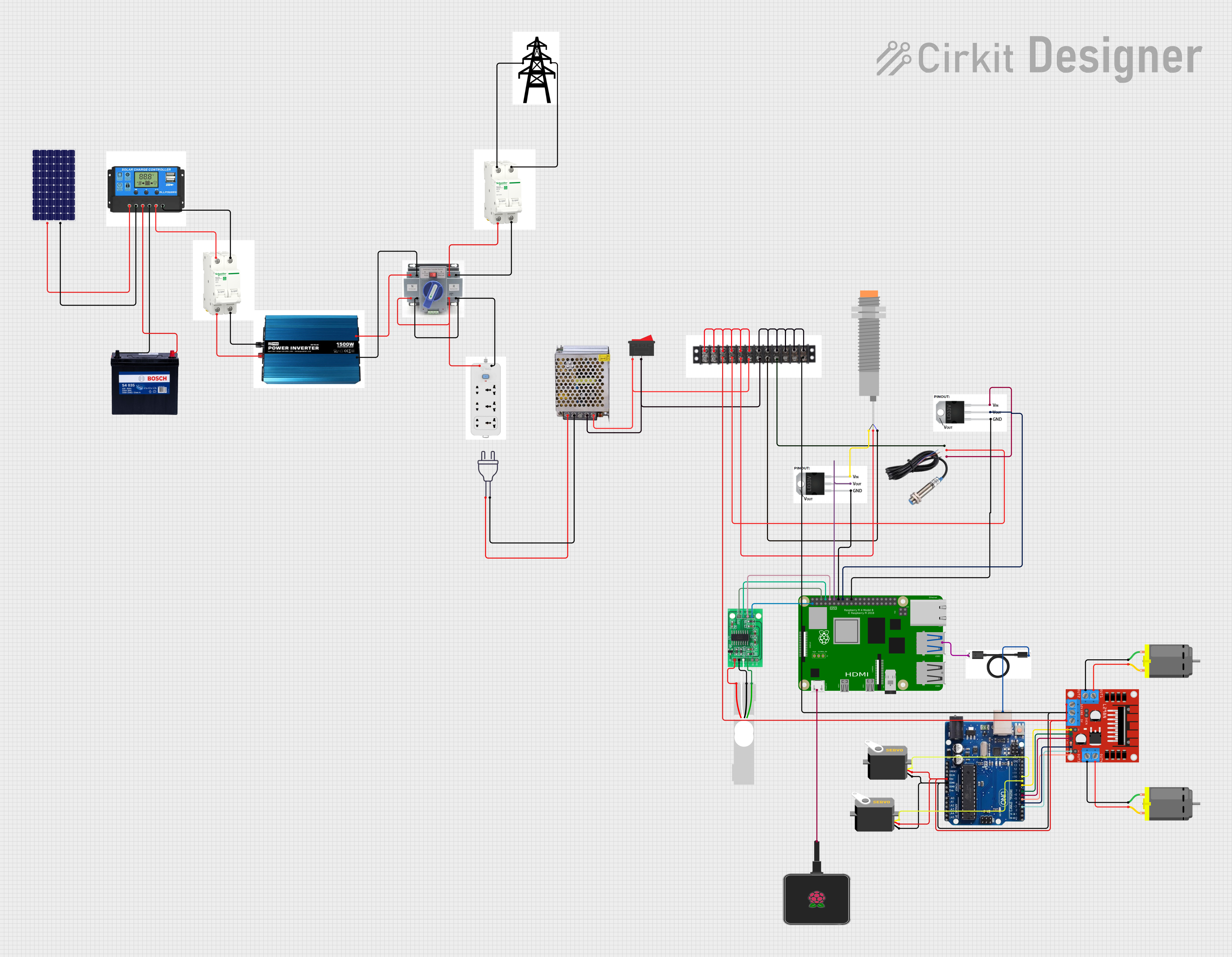
 Open Project in Cirkit Designer
Open Project in Cirkit Designer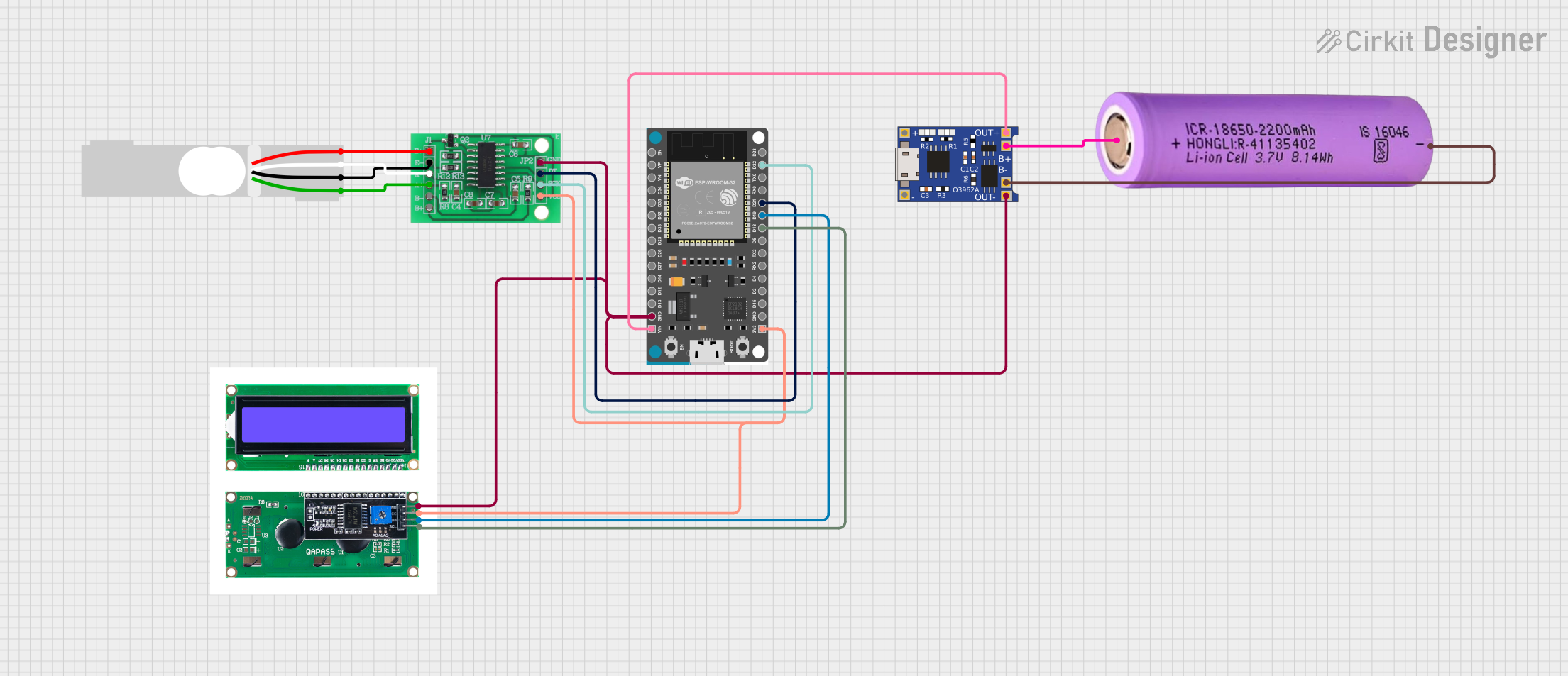
 Open Project in Cirkit Designer
Open Project in Cirkit Designer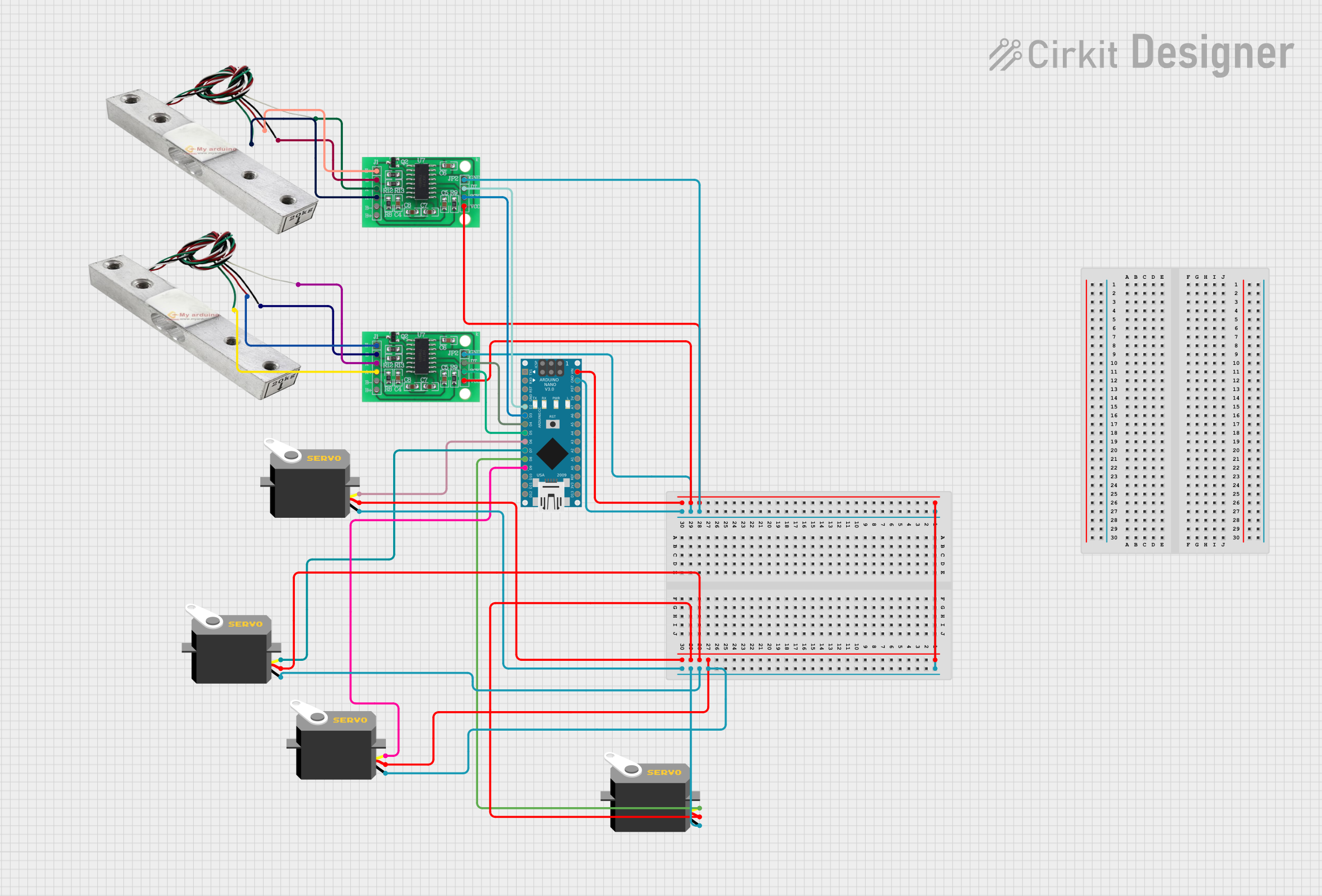
 Open Project in Cirkit Designer
Open Project in Cirkit Designer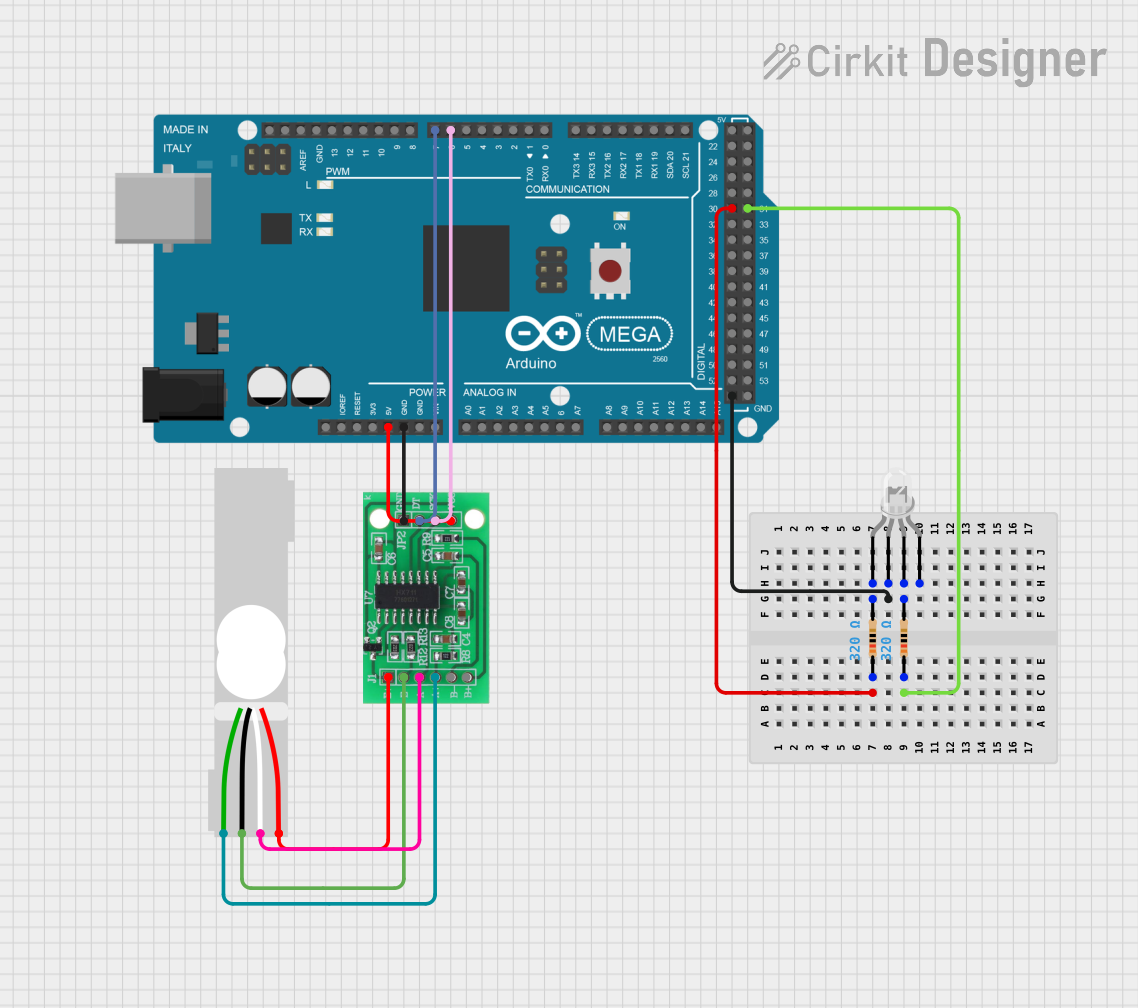
 Open Project in Cirkit Designer
Open Project in Cirkit DesignerExplore Projects Built with HX711 - Bridge Sensor Interface

 Open Project in Cirkit Designer
Open Project in Cirkit Designer
 Open Project in Cirkit Designer
Open Project in Cirkit Designer
 Open Project in Cirkit Designer
Open Project in Cirkit Designer
 Open Project in Cirkit Designer
Open Project in Cirkit DesignerCommon Applications and Use Cases
- Digital weighing scales
- Industrial process control
- Force measurement systems
- Pressure sensing applications
Technical Specifications
Key Technical Details
- Precision: 24-bit ADC
- Input Voltage: 2.6V to 5.5V
- Rated Operating Temperature: -40°C to +85°C
- Gain Selection Options: 32, 64, or 128
- Data Rate: 10SPS or 80SPS (samples per second)
- On-chip oscillator requiring no external component with optional external crystal
Pin Configuration and Descriptions
| Pin Number | Pin Name | Description |
|---|---|---|
| 1 | VCC | Power supply (2.6V to 5.5V) |
| 2 | GND | Ground |
| 3 | DT | Data output from HX711 to microcontroller |
| 4 | SCK | Serial clock input |
| 5 | E+ | Excitation+ for load cell |
| 6 | E- | Excitation- for load cell |
| 7 | A- | Channel A negative input |
| 8 | A+ | Channel A positive input |
| 9 | B- | Channel B negative input (optional) |
| 10 | B+ | Channel B positive input (optional) |
Usage Instructions
How to Use the HX711 in a Circuit
- Connect VCC to a 2.6V to 5.5V power supply.
- Connect GND to the ground of the power supply.
- Connect DT to a digital input pin on your microcontroller (e.g., Arduino).
- Connect SCK to a digital output pin on your microcontroller.
- Connect the load cell wires to E+, E-, A+, and A- accordingly. If using a four-wire load cell, ignore B+ and B-.
Important Considerations and Best Practices
- Ensure that the power supply voltage is within the specified range to avoid damaging the HX711.
- Use a stable and noise-free power supply for accurate measurements.
- Keep the wires between the HX711 and the load cell as short as possible to minimize noise and signal degradation.
- Calibrate the load cell with known weights to ensure accurate readings.
- Implement proper ESD precautions when handling the HX711 to prevent static damage.
Example Code for Arduino UNO
#include "HX711.h"
// HX711 circuit wiring
const int LOADCELL_DOUT_PIN = 3;
const int LOADCELL_SCK_PIN = 2;
HX711 scale;
void setup() {
Serial.begin(9600);
scale.begin(LOADCELL_DOUT_PIN, LOADCELL_SCK_PIN);
}
void loop() {
if (scale.is_ready()) {
long reading = scale.read();
Serial.print("Reading: ");
Serial.println(reading);
} else {
Serial.println("HX711 not found.");
}
delay(1000);
}
Troubleshooting and FAQs
Common Issues
- Inaccurate Readings: Ensure the load cell is correctly calibrated and that the HX711 is receiving a stable power supply.
- No Data Output: Check the wiring between the HX711 and the microcontroller, ensuring that DT and SCK are connected to the correct pins.
- Erratic Values: Make sure the load cell is securely mounted and that there is no mechanical stress or vibrations affecting the readings.
Solutions and Tips for Troubleshooting
- Double-check all connections and solder joints for any loose or cold solder points.
- Use a multimeter to verify the voltage levels at VCC and GND.
- Isolate the load cell and HX711 from electrical noise sources.
- If using long wires, consider using shielded cables or twisted pairs to reduce noise.
FAQs
Q: Can the HX711 be used with any load cell? A: The HX711 is compatible with most strain gauge load cells. Ensure the load cell's rated output matches the HX711's input requirements.
Q: How do I calibrate my scale using the HX711? A: Calibration involves recording the raw output from the HX711 with a known weight on the load cell and then calculating a conversion factor to convert raw readings to weight units.
Q: What is the purpose of the gain selection option? A: The gain selection allows you to set the amplification factor for the signal coming from the load cell, which can be adjusted based on the load cell's sensitivity and the required resolution.
Q: How can I increase the sampling rate? A: The HX711 has two selectable data rates: 10SPS and 80SPS. The rate can be set by controlling the SCK pin according to the HX711 datasheet.
Q: Can I use the HX711 for applications other than weighing scales? A: Yes, the HX711 can be used in any application that requires high-resolution analog-to-digital conversion of a differential input signal, such as pressure sensors or force sensors.